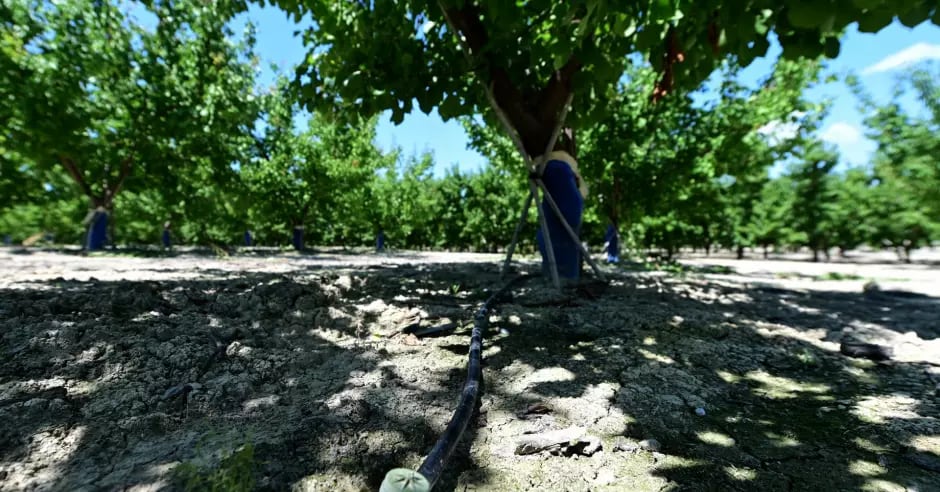
How to irrigate the fields with rainy increasingly rare? The Spanish region of Murciawhich has been using almost 100% of its sewage waterfound an answer that has become an attractive model for many countries.
“Here, the water is still dirty (…) But in the end it becomes very crystal clear, without bacteria”says Carlos Lardín, operations manager of Esamur, a public body that manages wastewater from this southeastern region of the Iberian Peninsula.
At his feet, in a treatment plant, brown water bubbles in a sand removal tank, a first step before being sieved, filtered, biologically treated and decanted, in a process that manages to give “a second life” to wastewater, explains the 45-year-old engineer.
Murcia, which claims to be the leading fruit and vegetable producing region in the European Union despite its arid climate, set itself the challenge 23 years ago of compensating for its chronic deficit in water resources by reusing wastewater to irrigate its crops .
To do this, it built a network of 100 treatment plants, which recover the water already served and clean it, with the additional step of disinfecting it, which allows its use in irrigation.
This treatment, which uses filters and ultraviolet rays, guarantees that the water “is not contaminated” and do not transmit bacteria “like E. coli” to fruits and vegetables, indicates the person in charge of Esamur.
Insufficient but “important”
This system enables 98% of the region’s wastewater to be reused, compared to an average of 9% in Spain and 5% in the EU, according to data from the Spanish government.
A situation that became more relevant after Madrid recently reduced the transfer of water from the Tagus River, threatened to dry up, to Murcia.
According to Esamur15% of the irrigation of the agricultural land of the region comes from treated sewage.
“Is not sufficient”but “It’s still important”considers Feliciano Guillén, head of the association that distributes water among farmers in the area.
An opinion shared by José Peñalver, owner of ten hectares near the town of Campos del Río.
“Everything that can be collected (from water) is good, wherever it comes from and as long as it is put to good use,” says this 52-year-old apricot farmer.
On his land, an automated drip system limits irrigation to what is strictly necessary, at a rate of two hours per day.
“Without that water, everything here would be dry”underline, and add: “Every drop counts”.
“Well precious”
Seeking to respond to global warming, the Spanish government committed in mid-May to boost the rate of wastewater reuse on a national scale, allocating 1,400 million euros ($1,530 million) to build infrastructures similar to those of Murcia.
“Water is a precious commodity that can also be recycled. (…) Worth”, said this month the minister for the Ecological Transition, Teresa Ribera, who highlighted the work with “small municipalities”that “They are the ones who have the most difficulty undertaking these investments.”
According to Spanish Association for Desalination and Reuse (Aedyr), 27% of the 2,000 wastewater treatment plants in the country offer treatments that allow the water to be used for agriculture. A number that could rapidly increase.
Less expensive than desalinating seawater, recycling wastewater is drawing interest from other countries, such as France, where President Emmanuel Macron announced in March that he wanted to increase water reuse, modeled after Spain.
An interest that is noticeable in Murcia, where in recent months “many delegations from foreign countries have come to visit our facilities”even Latin Americans, such as Argentina and Bolivia, says Carlos Lardín.
“This water does not depend on the weather, it guarantees at least a stable amount of water to irrigate”he congratulates.
Source: AFP
Source: Gestion
Ricardo is a renowned author and journalist, known for his exceptional writing on top-news stories. He currently works as a writer at the 247 News Agency, where he is known for his ability to deliver breaking news and insightful analysis on the most pressing issues of the day.











